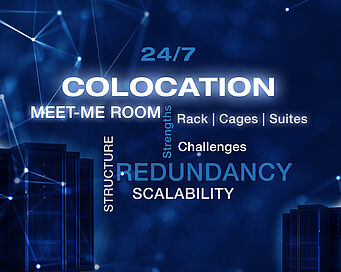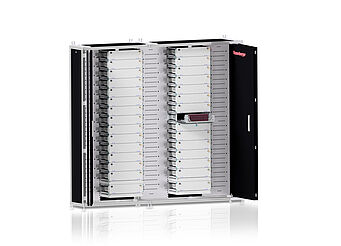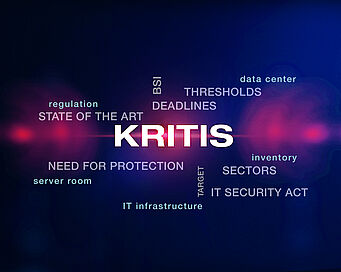Balancing the options on-premises, colocation and cloud
Many of our customers are faced with the challenge of having to make themselves fit for the future, in other words: keeping the company's IT infrastructure efficient and remaining competitive. One of the most important means of doing this is cloudification of the data centers. There are various options available to be balanced. We discussed what needs to be considered here with our process manager Martin Lukas.
The question is: colocation, on-premises or (public) cloud? What are the initial considerations in this regard?
Martin Lukas: „Our customers are continuously developing their IT strategies. Of course, this includes checking all areas which cloud offerings are available and how to derive maximum benefit from them. However, this is always based on the premise of what is economically reasonable and necessary. Accordingly, there is no one "right" solution, but each time only a company-specific consideration. To begin with, applications should be identified that must definitely remain on-premises, i.e., that cannot be outsourced. Secondly, it is important to clarify whether outsourcing to a colocation data center is an option and what services are required. This information can then be used to work out in more detail what the advantages and disadvantages of each option are.“
So we are talking about a SWOT analysis: on-premises vs. cloud vs. colocation? What exactly does this look like?
Martin Lukas: „The SWOT analysis, is a technique that is used to determine the strengths, weaknesses, opportunities and threats (SWOT) of your company or a specific project. Strengths of on-premises include, for example, that the data remains under your own control, as does the IT environment, including physical access, security processes, and so on. This can be crucial for a Critical Infrastructure Company (CRITIS), for example. Weaknesses include the lack of flexibility: changes cannot be implemented at short notice, and costly resources must be kept available for peak loads, which are usually not used. In addition, generally higher investments (CAPEX) are necessary, which tie up a lot of capital. One of the opportunities is that you can develop your own innovative solutions that set you apart from your competitors. One of the risks is whether the IT administration is able to push developments forward with the necessary quality in addition to day-to-day operations.“
What are the arguments for and against colocation?
Martin Lukas: „Outsourcing IT services to an external data center provides more flexibility and reduces investment requirements. When considering the weaknesses, it is important to consider, among other things, whether the configuration options actually allow the required flexibility, the extent to which communication with an external service provider causes additional effort and thus costs, and that the expertise of internal IT administration could suffer in the long term. On the other hand, there is an opportunity to further qualify IT staff and deploy them for higher-value services. In addition, IT services that remain in-house may be able to be provided using standardized and thus less expensive hardware. Risks include issues such as the reliability and trustworthiness of the provider, possible dependencies and a lack of influence on hardware decisions and security processes."






